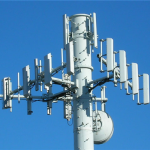
Carcinogenicity of radiofrequency electromagnetic fields The Lancet Oncology (2011-06-22)In May, 2011, 30 scientists from 14 countries met at the International Agency for Research on Cancer (IARC) in Lyon, France, to assess the carcinogenicity of radiofrequency electromagnetic fi elds (RF-EMF). Holding a mobile phone to the ear to make a voice call can result in high…






